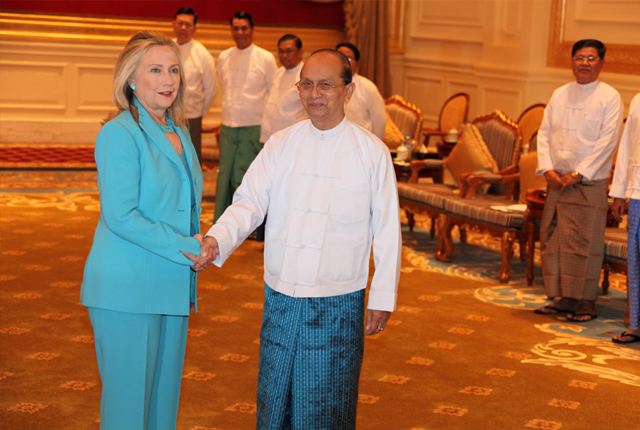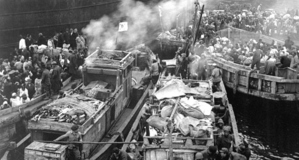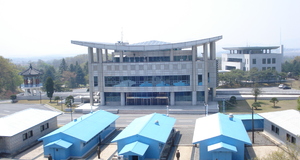From Cornell International Affairs Review VOL. 6 NO. 1A Pacifist in the Pacific: Past, Present, and Future United States Policy Towards Myanmar
By
Cornell International Affairs Review 2012, Vol. 6 No. 1 | pg. 1/1
IN THIS ARTICLE
KEYWORDS
AbstractMyanmar, sitting on the border between South and Southeast Asia, reflects a historically oppressive state with internal struggle as surrounding countries compete for influence. In 1990, the government promised multi-party elections only to ignore the results and imprison advocates for democracy, including Aung San Suu Kyi, the face of Myanmar’s democratic movement. Afterwards, the United States adopted economic sanctions and restricted ties with the country. Recently, leaders in Myanmar have reached out to the United States for the first time in decades. With policy towards Myanmar* at a crossroads, how can the United States pursue its own interests while influencing Myanmar’s slow transition to political and economic change? IntroductionAs Myanmar begins to reach out to the United States diplomatically, how can the United States evolve its previous policy to reflect its national interest while influencing Myanmar’s slow transition towards political and economic change? The US has maintained economic sanctions against Myanmar since 1990, but recently reevaluated its approach. In 2009, the US initiated a strategy of “practical engagement,” using both pressure and engagement to establish better relations with Myanmar as it starts to engage with the US. In November 2011, President Barack Obama stated in a speech to the Australian parliament, “After a decade in which we fought two wars that cost us dearly, […], the United States is turning our attention to the vast potential of the Asia Pacific.”2 Secretary of State Hillary Clinton visited Myanmar two weeks later, marking the first visit by a Secretary of State to the country since John Foster Dulles in 1955.3 On April 1, 2012, the National League for Democracy (NLD) party, led by democratic revolutionary Daw Aung San Suu Kyi, won 43 out of 44 contested parliamentary seats in Myanmar’s by-election – an event Secretary Clinton called “an important step in Burma’s democratic transformation.”4 In this paper I examine past, present, and future US policy towards Myanmar. First, I provide an account of the country’s oppressive history, as Burma became modernday Myanmar. Second, I analyze Myanmar’s current internal and external challenges and evaluate the strategic national interests of the US, China, India, and the Association of Southeast Asian Nations (ASEAN) in regards to Myanmar. I incorporate a multi-level strategy for the Obama Administration, where China’s regional influence affects US policy towards Southeast Asia. In addition, I include Harvard International Affairs Professor Stephen Walt’s balance of threat theory, where states align against a common threat, to demonstrate how the US and Southeast Asia are beginning to balance against the strongest state in the region, China.5 Third, I present arguments for and against engagement and show how some critics assert that new diplomatic initiatives with Myanmar are premature. Finally, I present a prescription for an incentive-based policy using Robert Jervis’ Perception and Misperception theory, with both sticks for deterrence and carrots to appease the government, to implement a policy that eases sanctions on Myanmar if it meets expectations on political reform and adherence to rule of law. Myanmar presents a unique opportunity for a mutually beneficial relationship if the US can follow Massachusetts Senator John Kerry’s plan to “encourage even an authoritarian to change course working in concert with like-minded members of the international community.”6 History of Burma/MyanmarIn the 1820s, the British colonized the territory they named Burma. In 1886, the British made Burma into a province of India, and it did not become a separate colony until 1937.7 Burma’s independence hero, General Aung San, led a coalition of nationalist forces to negotiate independence from the United Kingdom in 1947. Five months later, a rival Burmese politician assassinated Aung San. The following January, Burma achieved independence and democratically elected U Ni as its first Prime Minister.8 In March 1962, General Ne Win gained power through a military coup. He suspended the 1947 constitution and closed the country from outside influence. Between 1962 and 1988, the Burmese people mounted protests against Ne Win’s isolationist and socialist regime as Burmese citizens realized his policies did not help the bring the change they had fought for under colonial rule.9 In 1988, a year before China’s Tiananmen Square massacre, the Burmese people launched a revolution and unarmed demonstrators took to the streets in peaceful protest in an event known as the “Massacre of 8-8-88.” Soldiers fired upon the masses, killing thousands of the non-violent protesters. The Burmese, intimidated by the use of force, did not stage any mass demonstrations again until the 2007 Buddhist monk-led “Saffron Revolution.” 10 These demonstrations were suppressed, but the effort underscored how Myanmar’s citizens continued to long for democracy.11 When the State Law and Order Restoration Council (SLORC) gained power after Ne Win’s resignation in late 1988, the government promised to hold “free and fair multi-party general elections.”12 Aung San Suu Kyi, daughter of revolutionary Aung San, ran for office and became the face of Burma’s democratic movement. In September 1988, the democratic activists of her National League for Democracy (NLD) party were detained as the SLORC declared martial law. Suu Kyi would be placed under house arrest for 15 of the next 21 years, while her party won 80 percent of the seats in the 1990 election.13 The government ignored the results, and it took from 1993 until 2007 to draft the constitution that SLORC, which became the State Peace and Development Council (SPDC), promised before the elections.14 The US implemented economic sanctions in 1990 and cut ties with Burma. The 2003 “Burmese Freedom and Democracy Act” banned imports from Myanmar to the US, and the legislation was expanded in 2008 to include jewelry from other countries made with Myanmar’s resources.15 In 2010, Thein Sein was elected president in the first elections since 1990, showing a partial move towards greater civilian government.16 Suu Kyi was still under house arrest, and her NLD party boycotted the vote.17 Suu Kyi was released following the election and continued to advocate for democracy within her country and to the international community. In the April 2012 by-elections, she was elected to parliament as the NLD party gained 43 out of 45 contested seats – the army and its proxy Union Solidarity and Development Party (USDP), however, still hold about 80% of the 664 Union Parliament Seats.18 Suu Kyi stated that she hoped “this will be the beginning of a new era, where there will be more emphasis on the role of the people in the everyday politics of our country.”19 Following the elections, the Obama Administration announced it would suspend sanctions and nominate Derek Mitchell to become first US ambassador to Myanmar in 22 years.20 Although Suu Kyi praised suspending sanctions as a “possible first step,” she noted that the democratization process is not irreversible “until such time that the military commits itself to democratization solidly and efficiently.”21 Internal and External ProblemsOnce a source of hope for Southeast Asia following World War II, the historically poorly managed country of Myanmar remains a source of trade and resources. However, internal problems become problems for its neighbors, and the international community cannot decide whether to maintain sanctions or engage Myanmar diplomatically and economically. China and India compete for influence, while ASEAN countries pressure the Myanmar government for political change. Meanwhile, the US has begun to try and take advantage of a possible opening in political freedoms to diplomatically engage Myanmar with the international community. For the US, Myanmar has multiple challenges to address in terms of providing for personal freedoms and addressing concerns regarding its possible nuclear capability. In the confirmation hearing for then-appointed envoy Derek Mitchell, Senator John Kerry expressed the urgency to address the problems in a country that “sits on sea lanes, natural resources, and fertile soil that create the conditions for potentially unlimited development.”22 However, demonstrating Graham Allison’s bureaucratic politics model, applied where goals conflict between organizations within the government, the debate over control of policy between the US State Department and Congress has caused polarization over the issue of relations with Myanmar.23 The 2010 presidential elections and 2012 parliamentary by-elections possibly showed false promise; the 2008 constitution requires a quarter of parliamentary seats to be reserved for the military, and members with relations to the old regime compose about 80% of the legislature.24 The US called for Myanmar to release its 2,100 political prisoners, and the 200 it released on October 13, 2011 represented a small step towards that goal.25 Reporters Without Borders placed it in the bottom ten countries in its world press freedom ranking with 108,900 Internet users out of 50.5 million people.26 Finally, Senator Richard Lugar disclosed that Myanmar could be getting assistance from North Korea for the development of nuclear capabilities, which engagement with Myanmar’s government could clarify.27 The US is concerned that despite opening up diplomatically, there has been little progress in human rights or constructive dialogue towards internal reconciliation.28 The US has adopted a multi-level strategy as the Obama Administration attempts to assert its strategic national interests in Myanmar, exercise greater American influence in the Pacific, and provide a counterweight to China’s growing influence.29 Previously, the US maintained economic sanctions while China pursued its strategic national interests in Myanmar after the military took over in 1988. However, Secretary Clinton’s visit in November 2011 signaled to China that the US seeks to weaken Beijing’s influence in Myanmar. As Assistant Secretary of State Kurt Campbell stated in October 2009 before the Senate Foreign Relations Committee, “Let me be clear: we have decided to engage with Burma because we believe it is in our interest to do so.”30 Campbell also stressed multilateral engagement to promote transparency in Myanmar’s government.31 As the US pursues its own interests, it must factor into its decision-making the interests and goals of China, India, ASEAN, the United Nations, and Japan, among others.32 China has cultivated strong political and economic relations in Myanmar. It put billions of dollars into trade and investment, receiving military benefits, such as access to ports, in return. China sways the government despite neighbors’ concerns about Myanmar’s future.33 China and Russia vetoed attempts for international sanctions and, as evidenced by Iran and Iraq, both countries do not believe the UN Security Council should sanction a country for human rights violations.34 Li Chenyang, professor at Yunnan National University, argues that Myanmar is not a threat to regional peace or security, and that “simply adopting the Western democratic system would cause social chaos and humanitarian disasters.”35 As a newly emerging economy, China wants to pursue closer cooperation with other developing countries. Myanmar values China as a country that opened up to it when Western countries did not.36 From a US perspective, China’s support of developing countries can insulate dictatorships in countries such as Myanmar and North Korea that otherwise could be influenced by the West.37 From Myanmar’s perspective, only China has a seat on the UN Security Council, which gives the relationship special purpose.38 India, despite cutting off contact with Myanmar in 1988, slowly adopted new policies after 1993, in order to build better relationships with Southeast Asian countries, to provide balance against China’s threat in Myanmar, and to help its northeastern states.39 In addition to being oil-rich, Myanmar offers a land route to other East Asian countries. India’s retired General Gurmeet Kanwal believes that China encourages North Korean assistance to Myanmar on nuclear technology. India’s policy is that the international community must prevent other Asian countries from developing nuclear weapons.40 After 1990, the renamed country of Myanmar peaked in internal growth when it partially liberalized the economy. Since then, it has become both an area of national interest and a threat to its neighbors, as the corrupt gas and oil rich state is home to a drug trade that produces 80% of the heroin in Southeast Asia.41 In 1997, Myanmar was controversially admitted to ASEAN under the rationale that member states would positively influence Myanmar’s decision-making.42 While the body has not resolved the collective action problems that Southeast Asian nations face, where member-states have difficulty not acting in their own self-interest, ASEAN has provided some integration and corporate centralization to balance against the threat of China’s future regional hegemony.43 ASEAN is a critical factor in future Myanmar political reform, but it is driven by ideologies of economic states like Indonesia and Malaysia, which emphasize growth over democracy and human rights. ASEAN, however, has also admitted other undemocratic countries including Vietnam, Cambodia, and Laos.44 In 2009, Secretary Clinton visited Indonesia to strengthen the US-ASEAN partnership and encourage the promotion of human rights and democracy. This was a reversal of the Bush Administration’s policy whereby former Secretary of State Condoleezza Rice missed the ASEAN Regional Forum twice during her four-year term.45 However, because of Myanmar’s uncertain future, ASEAN has expressed doubts about giving Myanmar the regional chairmanship when its turn comes in 2014.46 Pros and Cons of a New StrategyIncentives to pursue a new strategy emerged after neither engagement or sanctions alone led to Myanmar’s political reform. Greater diplomacy follows President Obama’s stance of “practical engagement” around the world. Stanford political scientist Larry Diamond suggests that because of the “logic of linkage and leverage, it is not surprising that sanctions do not bring about democratic reform.” 47 Although sanctions may have worked with western-linked countries, they have not in countries like Cuba, North Korea, Zimbabwe, and Myanmar. However, South Africa’s last decade of apartheid offers a counterexample, where lack of foreign investment and an economic recession caused leaders to negotiate.48 Overall, isolating nations already outside western influence diminishes leverage unless there is widespread cooperation and linkage.49 For US policy, engagement supplements sanctions, and the restrictions can be permanently lifted once Myanmar meets benchmarks regarding political reform and improved human rights. This promotes political change, as economic integration with its neighbors brings money, jobs, and greater demand for transparency.50 In the Western hemisphere, while there are differences between the two cases, Chile offers an example of a US policy of sanctions, then sanctions plus engagement, to achieve political reform. In order to change the behavior of Chile and Pinochet’s human rights abuses during the 1970s and 1980s, Congress imposed sanctions on military, economic, and multilateral aid.51 The US used pressure through sanctions and, in the late 1980s, it used engagement with the democratic opposition. The democratic opposition against the Pinochet regime used US and international support to help defeat Pinochet in the plebiscite election in 1988, easing the transition to a democratically elected president in 1990.52 The US would not directly fund Myanmar’s democratic opposition, but engagement gives democratic parties a better environment to participate in government. Others are hesitant to lift economic sanctions on Myanmar. The relatively low foreign investment stood at $259 million in 2007 and $323 million in 2009, but increased to $20 billion in 2010-2011.53 The White House eased some sanctions on Myanmar but does not support lifting the import ban, which the Senate allowed to temporarily expire on September 30, 2012. It is possible that liberalizing the economy to allow greater foreign investment will lead to yet greater corruption in an already corrupt system. However, as Myanmar gives more voice to democratic movements like Aung San Suu Kyi’s NLD party, civilian discontent will hold the government more accountable to its people.54 In the current era of globalization and greater flow of information, the international community and people of Myanmar can force more accountability on the government. This change will most likely happen more slowly than Indonesia’s change between 1980 and 2000. Mancur Olsen outlined a theory about transition from dictatorship to democracy in the American Political Science Review, which states, “if no one leader can subdue the others, […], then the alternative is either to engage in fruitless fighting or to work out a truce with mutual toleration.” 55 As the nominally civilian government in Myanmar has begun to show, the pressure of political reform can lead to power sharing and an opportunity for a transition to democracy. Future Policy OutlookFormer Secretary of State George Kennan stressed in American Diplomacy that the US needed to ensure that emerging powers are prevented from taking control over key global industrial centers. Stephen Walt argued this logic “reflects a realist view that it is to U.S. advantage to keep Eurasia divided among many separate powers.” As the dominant regional power in the Western hemisphere, the US must work with Southeast Asian countries to prevent China from establishing a “sphere of influence” and similar regional hegemony in Asia. 56 As Myanmar emerges from fifty years of military rule, the current US strategy of pressure plus engagement is appropriate.57 In Perception and Misperception in International Politics, Robert Jervis states, “while sticks as well as carrots are to be employed, the other’s friendship cannot be won by gratuitous concessions.”58 The US should offer sticks to deter Myanmar from taking hostile actions and offer incentivebased carrots to reward Myanmar’s progress in key areas including human rights, democratic reform, and support for the rule of law. If Myanmar’s government meets clearly stated goals, the US can slowly lift economic sanctions to cultivate political and economic reform, improved human rights, and more personal freedoms. Over time the US and the international community must enact several more progressive and engaging policies, but must do so without a specific timetable to avoid premature transition. The US needs to pressure Myanmar to become more transparent with its nuclear development intentions, allow free assembly, and implement “free, fair, transparent, and inclusive” elections by 2015.59 The US, alongside ASEAN, the EU, Japan, and Australia, should institute a development aid package for Myanmar, enacted inside rather than outside the state, as aid has been implemented in the past.60 The aid could help support and restore the educational system, provide health support including HIV/AIDS treatment, fund rural farmers, and support other key efforts to address the needs of a country whose people frequently live on $1 to $3 dollars a day.61 There must be adequate oversight in place to ensure any new foreign aid is going to the right places and reaches the country’s civil society to promote development, rather than being channeled through the government. If Myanmar continues positive reforms, the US can improve diplomatic relations by endorsing Myanmar’s integration into international bodies. Additionally, the international community needs to reach out to military members in the parliament by offering them freedom from persecution if they permanently remove themselves from government.62 The US, through a clear policy of engagement and accountability, and Myanmar, through transparency and reform, can and must develop mutual credibility, with the ultimate goal of paving a path where the US, working with the European Union, Australia, and Japan, can permanently lift sanctions.63 This can only occur once it is certain that Myanmar’s leaders are embracing reform with institutional safeguards in place so future crises do not return the state to past trends. ConclusionArguably, the future of democracy and economic growth rests with Asia more than any other region in the world.64 Myanmar’s potential economic prosperity faded as its neighbors, the Asian “Tigers,” enjoyed economic growth while Myanmar grew at a level almost two percent lower annually than it did before 1962.65 It had been one of the most undemocratic countries in the world until the end of its 48-year military rule in 2010, when President Thein Sein showed interest in engaging diplomatically with the US.66 In April 2012, the “landslide victory” for Aung San Suu Kyi’s party in parliamentary by-elections provided hope for Suu Kyi’s goal of a “genuinely democratic atmosphere” in Myanmar.67 The Obama Administration is trying to shift American interests away from the Middle East and towards the Pacific. Secretary Clinton made progress in her November 2011 visit to the country after President Obama announced a “larger and long-term role in shaping this region and its future.”68 Clinton met with the leader of Myanmar’s democratic movement, Daw Aung San Suu Kyi, and made progress to create a mutually beneficial partnership with Myanmar and its allies in the Pacific. The US government’s approach of “pragmatic engagement” can offer the slow transition to political reform that is needed in Myanmar. Endnotes
* Note: In 1989, the military regime changed Burma’s name to the Union of Myanmar, but the western world refused to adopt the new name. However, since the 2008 Constitution officially changed the nation’s name to the Republic of the Union of Myanmar, this essay uses Myanmar rather than Burma when referring to the country.1 Suggested Reading from Inquiries Journal
Inquiries Journal provides undergraduate and graduate students around the world a platform for the wide dissemination of academic work over a range of core disciplines. Representing the work of students from hundreds of institutions around the globe, Inquiries Journal's large database of academic articles is completely free. Learn more | Blog | Submit Latest in Political Science |





















